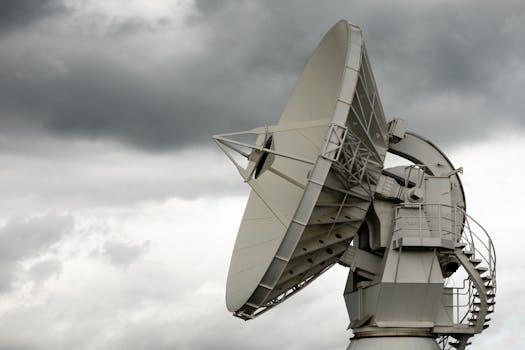GEO Satellites: Understanding the Technology and Applications of Geostationary Satellites

GEO Satellites: Introduction to Geostationary Satellites
GEO satellites, or geostationary satellites, are a type of satellite that orbits the Earth at an altitude of approximately 36,000 kilometers above the equator. At this height, the satellite’s orbital period matches the Earth’s rotational period, allowing it to remain stationary relative to a fixed point on the Earth’s surface. This unique characteristic makes GEO satellites ideal for a wide range of applications, including telecommunications, navigation, and weather forecasting.
How GEO Satellites Work
GEO satellites are launched into space using powerful rockets and are placed into a geostationary orbit, where they can remain for up to 15 years or more. Once in orbit, the satellite’s transponders receive signals from Earth stations and retransmit them back to other parts of the world. This allows for global communication, navigation, and weather forecasting. GEO satellites are also equipped with solar panels, which provide the necessary power to operate the satellite’s systems.
Applications of GEO Satellites
GEO satellites have a wide range of applications, including telecommunications, navigation, and weather forecasting. In telecommunications, GEO satellites are used to provide internet connectivity, telephone services, and television broadcasting to remote and underserved areas. In navigation, GEO satellites are used to provide location information and timing signals, which are essential for GPS navigation. In weather forecasting, GEO satellites are used to monitor weather patterns and provide early warnings for severe weather events.
Benefits and Challenges of GEO Satellites
The use of GEO satellites has several benefits, including global coverage, high bandwidth, and reliability. However, there are also challenges associated with GEO satellites, such as the high cost of launch and maintenance, orbital congestion, and the risk of satellite failure. Despite these challenges, GEO satellites remain a crucial part of modern telecommunications and navigation systems.
Future of GEO Satellites
The future of GEO satellites looks promising, with advancements in technology and the increasing demand for satellite-based services. Next-generation GEO satellites are being developed with improved capabilities, such as higher bandwidth and more efficient power systems. Additionally, the use of small satellites and constellations is becoming more popular, which could potentially disrupt the traditional GEO satellite market.




